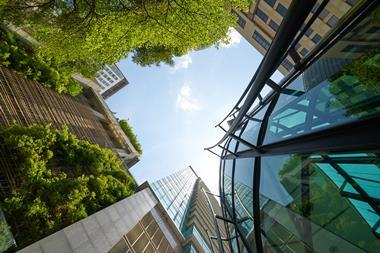The government’s loosely defined ‘Build Back Better’ mantra suggests construction of new buildings and infrastructure will be one of the engines of economic recovery, but what might this mean in practice?

Those expecting a surge of new-build construction should bear in mind that 80% of the buildings required in 30 years already exist, and with land at a premium in and around major cities, refurbishment, rehabilitation and restoration projects make up around 40% of UK construction projects.
Added to that, Historic England lists over 400,000 protected buildings and monuments, with 11,000 heritage buildings in the City of Westminster alone. Indeed, the new London Plan states that careful consideration for preserving and enhancing the historic element of heritage buildings will be an essential criterion for development schemes – and with good reason. London’s distinctive heritage is what makes the city attractive, and much of this character is contained in its buildings.
So, instead of ‘Build Back Better’, perhaps ‘Adapt, Make Better’ is a more appropriate ambition.
Adaptive reuse is not new and is in fact a practice that has been carried out over hundreds of years – often because the built form outlasts its original intended purpose. It is also often cheaper to adapt rather than to build new.
Historic buildings present unique challenges for architects. The challenges will often revolve around complying with more detailed building regulation, in particular universal accessibility, fire detection and mitigation, along with an occupant’s comfort, which can require changes to the original building’s plan form.
Furthermore, the installation of modern building services requires a comprehensive understanding of the potential impact any works may have on the building fabric. For the architect working on historic buildings, it can often feel that we spend considerably more time on the science of planning services routes than on the art of fine conservation repairs.
No two projects are the same. Each can only be tackled after gaining a thorough knowledge of the building, by learning about the building construction techniques of its day and by physically ‘walking the course’. The designer working on adaptive reuse must spend time on site looking and observing.
Adapting historic buildings is difficult, whether that is for a new use or a continuation of its existing use. It can be argued that the original use is often the best as it involves fewer changes to the built form, but this is not always possible.
There are some policy changes that can encourage more adaptive reuse. These include reducing VAT charges on repair costs, which often hinder the renovation and refurbishment of historic buildings, and more statutory protection that recognises architectural and historical significance.
We must not forget there is a huge opportunity to reshape town and city centres without losing character. Architecture offers us a tangible connection to the past and preserving historic buildings allows us to ensure that the stories they tell aren’t lost. That is why we have a vital task before us to make sure yesterday’s spaces remain relevant and productive today and for future generations.
Simon Douch is principal of heritage conservation at HOK






























No comments yet